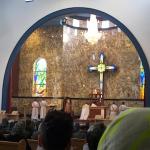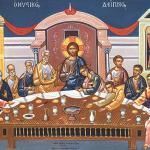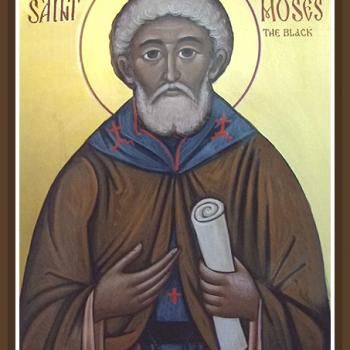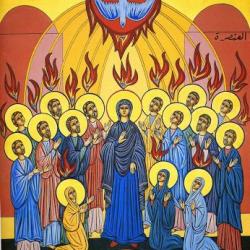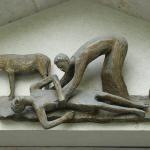We are nearing the end of Great and Holy Week in the Byzantine calendar. The last week of Great Lent, we reflect upon Christ’s suffering and the Church’s purification from sin. This in preparation for the death, resurrection, and ascension of Our Lord Jesus Christ.
On this Great and Holy Friday, my thoughts and prayers turn to my Mormon friends. (Among my historical fascinations are churches descended from the religious movement founded by Joseph Smith, Jr.) My Mormon friends have suffered as the Church of Jesus Christ of Latter Day Saints (LDS) was rocked by several sex scandals this past week. It does not matter whether one is faithful or jack, liberal or conservative, ex- or true pioneer blooded. Each of my Mormon friends is feeling a range of emotions over reports breaking in the secular media.
Catholic after Boston
I both empathize and understand. This past week also marked the 16th anniversary of the Boston Globe breaking its story of sex abuse among Catholic clergy in the Archdiocese of Boston. First published 22 March 2002, the story became the catalyst for other investigative pieces throughout the United States, Canada, and eventually the western world.
At the time I found myself struggling as a young canonist. For my non-Catholic friends and non-Orthodox friends, a canonist (or canon lawyer) is a lawyer who ministers within the Church’s internal legal system. I had graduated with a licentiate degree in canon law and began working as a canon lawyer in May 2000. Back in my day a canonist was still considered a rookie by one’s colleagues until one had gathered two-years of full-time experience in canonical ministry.
Yet more importantly I struggled as a young parent. The same year I graduated with a licentiate in canon law, my wife gave birth to our oldest child. Public revelation that ordained ministers within my faith tradition had used their position as religious authorities to sexually abuse children gutted my parental instinct. In fact, there was a notorious incident at a canon law conference where I nearly traded punches with a priest and senior canonist who mocked the existence of parental instinct. It was through sharing my experiences as both a canonist and a Catholic parent that I was first introduced to Catholic blogging.
So from the perspective of sympathetic Catholic canonist, father and blogger, here are three lessons Catholic learned from our experience with clergy sexual misconduct:
1 – Victims are not the enemy
When reports of sexual misconduct among Catholic clergy first broke in the Boston Globe, the reaction of many clergy and lay Catholic leaders was to become defensive of the institution. I never felt that most colleagues intended to blame victims. Yet resentment towards them was often implicit in feeling persecuted by the outside world–particularly by the media breaking story after story.
Victims are not the enemy. They are victims. They found themselves violated in the most violent and intimate ways by adults in positions of spiritual trust and authority. To a child or vulnerable adult, the perpetrator represented God. This is why victims felt so powerless to stop the abuse. So of course victims often now feel anger towards the Church and its leadership. They are victims.
Yet prior to Boston, the Church’s main goal when handling alleged sexual misconduct was to secure the silence of the victims. Leaders felt obligated to protect the Church’s reputation as an institution. Thus victims and parents who came forward–sometimes after years of pain–found themselves pressured to remain silent, cornered into signing non-disclosure statements, and in some cases threatened with civil lawsuits or their reputations attacked publicly. A particularly shameful example is the way Legion of Christ and its associated apostolates assassinated the reputations of the victims of its founder and serial sex abuser, Marcial Maciel. Some critics who supported Maciel’s victims were even sued into silence.
In short, these victims were treated as the enemy. Not as wounded sheep. And in prioritizing the Church as a corporation over the people God calls us to serve, those of us called to a pastoral role failed to conform to the example of Christ the Good Shepherd. This eventually backfired against the Church as an institution. Average laity reacted with horror once they discovered the callous treatment of victims. In the victims average laity recognized their own vulnerable friends and family members.
2 – Focus on the victim’s pain, not your pain
A second lesson learned the hard way during the Catholic sexual misconduct crisis is to focus on the pain of victims rather than one’s own pain. Not that one should not acknowledge the pain one feels. Only that one should be aware the victims are suffering even more in most cases.
Yes it hurts to see your faith being attacked, especially if you bear fond childhood memories of the Church as a community and as an institution. It was in the Church that I was baptized and married. It was from the Church that I derived my lifestyle, my values, and my worldview. It was the Church that comforted me when I lost my grandparents. Of course it is painful to see my faith criticized and attacked publicly because of the actions of certain clergy.
Keep in mind that the victims also feel deep pain. Theirs is the pain of having been betrayed by representatives of our faith. In focusing upon the pain felt by victims, we become better placed to help both victims and ourselves. That is, we recognize the cause of our pain as those who committed the misconduct, not those who were innocent victims. This makes it easier to identify and correct its root problems.
3 – Transparency
As popular American journalist and faith commentator Rod Dreher famously noted concerning the fallout from Boston, the real scandal was not in the original sexual misconduct committed by priests, but in the coverup by the bishops afterward.
In today’s culture of social media and instant communication, transparency is necessary to stay ahead of scandal. “Let your yes be yes, your no be no. All else is from the devil,” says Our Lord in the Gospels. As well as “I am the way, the truth, and the life.” Truth and transparency go together.
How should one be transparent? First, apologize to victims immediately and offer fair compensation. This is just common sense. This is also about maintaining trust as an institution that represents Jesus Christ. The average person–including the average member of your faith community–instinctively understands the importance of apology, restitution, and fair play. These are lessons first learned in kindergarten.
Again, following revelation of the founder’s daughter, the Legion of Christ and Regnum Christi lost trust as Catholic institutions not because of their founder’s blatant disregard for Catholic moral teaching or its prior media persecution of its victims. But because their leaders then refused to apologize to the victims and offer fair restitution. This did not sit well with the average Catholic.
Yet public apologies and offers of fair restitution were only the beginning when it came to increasing transparency in order to restore trust in the Catholic Church as an institution. The Church also took the following corporate actions: Reputable outside agencies audited our practices and identified key problem areas that had led to the sexual misconduct crisis. The Catholic Church, in consultation with various experts, then instituted new and transparent practices that included mandatory reporting to civil authorities (outside of the sacrament of confession) as well as procedures for reception and internal investigation of complaints.
Finally, all clergy, employees and volunteers were trained on how to recognize possible situations involving sexual misconduct, and how to report them to appropriate authorities. Once implemented and trained, these steps were then explained to the average Catholic layperson in the pew. Only then did the long process begin through which trust was restored between Catholic laity and clergy.

